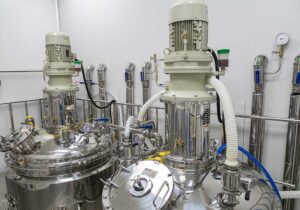
By Sushmita Das
The gear industry plays a crucial role in various sectors including automotive, aerospace, and manufacturing. Gears are essential components that transmit power and motion in machines and mechanisms. To ensure the optimal performance and longevity of gears, heat treatment techniques are employed on raw materials. Heat treatment is a process that alters the microstructure of metals, enhancing their mechanical properties. This article will delve into the best practices and innovations in heat treatment techniques for raw materials in the gear industry.
Importance of Heat Treatment in Gear Manufacturing
The heat treatment process of gears holds paramount importance as it profoundly impacts the mechanical properties and overall performance of the final product. Gears are intricate mechanical components designed to transmit power and motion efficiently between rotating shafts. Their ability to function effectively in various machinery and equipment is heavily reliant on their inherent strength, durability, and wear resistance. Heat treatment is the key to achieving these essential characteristics, thus making it an integral step in the gear production process.
Achieving Desired Characteristics:
Hardness:
One of the primary objectives of heat treatment in gear manufacturing is to increase hardness. Hardness refers to the material’s ability to resist deformation and wear. By carefully controlling the heating and cooling rates, the process encourages the formation of a hardened microstructure, often martensite. This hardness is vital for gears as they experience significant contact stresses during operation, and a harder surface ensures resistance to wear and deformation over time.
Strength:
Heat treatment also influences the strength of gears. Higher strength means that the gear can withstand heavier loads without failure. A combination of heat treatment techniques such as quenching and tempering can be employed to optimize the gear’s strength ensuring it can handle the stresses it will experience during operation.
Toughness:
While hardness and strength are crucial, excessive hardness can lead to brittleness, making gears prone to fractures or chipping under high impacts or shock loads. Heat treatment, through tempering or other means aims to strike a balance between hardness and toughness. Tempering, for instance, allows controlled reheating and slow cooling, which reduces brittleness while maintaining the necessary hardness.
Common Heat Treatment Techniques for Gears
Innovations in Heat Treatment Techniques
Over the years, the gear industry has seen remarkable innovations in heat treatment techniques that aim to improve efficiency and performance. Some noteworthy innovations include:

Conclusion
Heat treatment techniques are indispensable in the gear industry to produce high-quality, durable gears capable of withstanding demanding operational conditions. From traditional quenching and tempering to cutting-edge innovations like laser hardening and PPIN, advancements in heat treatment continue to drive the gear manufacturing industry forward. With a focus on precision, efficiency, and improved material properties, these techniques will undoubtedly play a crucial role in shaping the future of gear technology and its applications across various sectors.